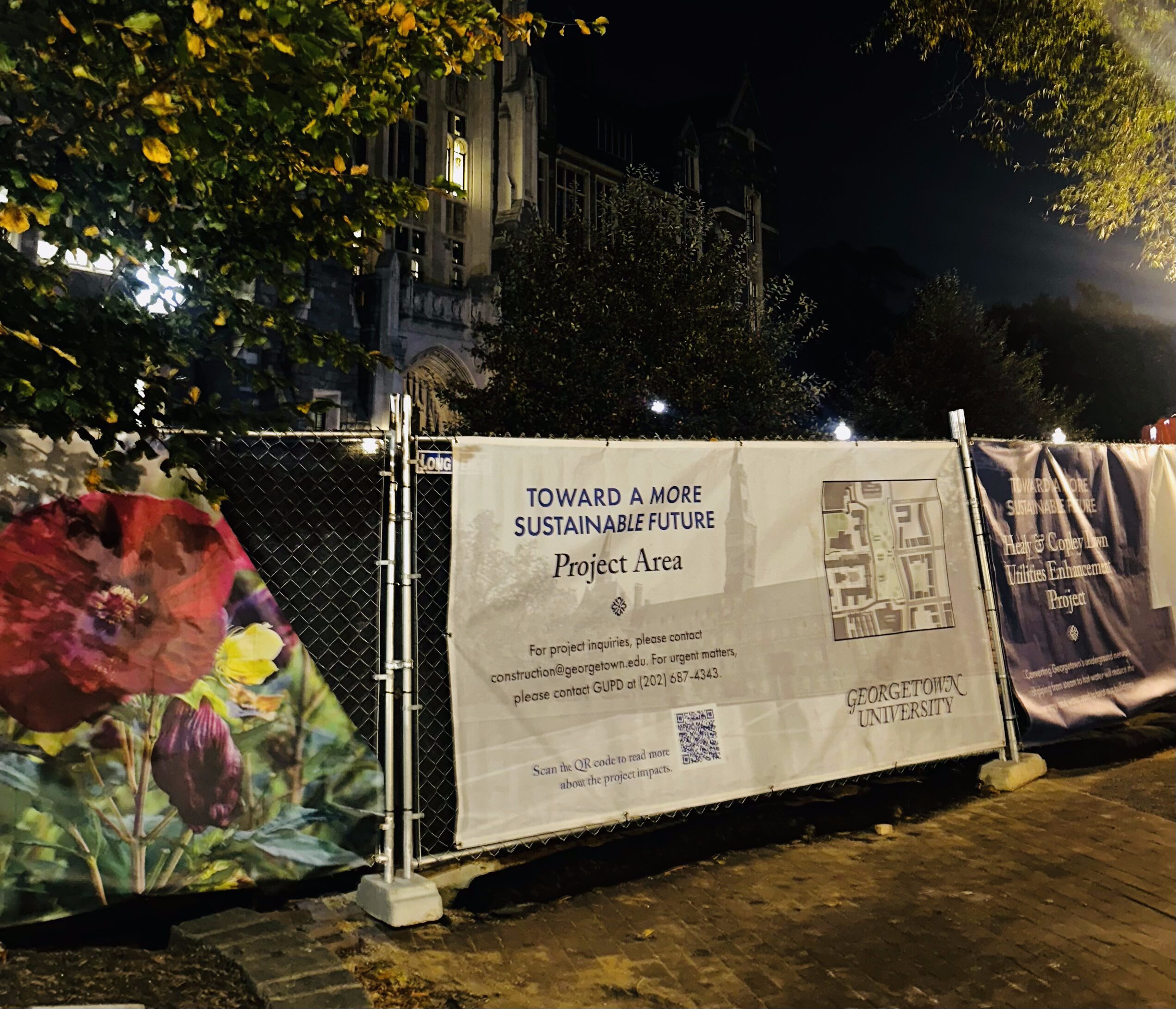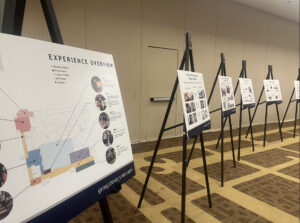Dodging forklifts on Copley Lawn, making detours around barriers near the Davis Performing Arts Center, and tuning out the sound of cranes have been the college experience for Georgetown students since June 2024. So what is in the works, and is it worth the inconvenience?
These interruptions around campus fall under the university’s three-year utility replacement project, which aims to upgrade Georgetown’s aging underground infrastructure with energy-efficient systems. The university says this project is part of the broader work to improve environmental sustainability on campus.
The plan for the project notes that, though it invests in a sustainable future, it is also dedicated to preserving the historic character of the campus for future generations. Other goals of this project include extending the lifespan of the utility systems by using more modern, durable materials and improving drainage capacity by upgrading the system that moves water away from the lawns to reduce flooding.
The project is now in its third phase, which expands construction from the south portion of Copley Lawn to Old North Road. As a result, pedestrian traffic has been redirected with a temporary path running alongside Healy Hall on Old North Way.
Seth Van Noord (SFS ’27) expressed disappointment that the campus is expected to be under construction into his senior year, with some projects expected to extend into 2026 and 2027.
“I don’t remember a time when Georgetown wasn’t under construction,” Van Noord said.
For campus tour guides, the construction poses a different kind of challenge. A Blue & Gray tour guide, who requested anonymity citing concerns about their job, admitted that it makes giving tours more difficult.
“As a tour guide, I think that the construction is definitely inconvenient and I’d hope it would be wrapped up quickly,” the guide said. “It’s very hard to lead prospective families around campus while the construction is going on and being [sic] very loud. But I do understand the purpose of it.”
The guide hopes that the ongoing construction does not taint how people perceive Georgetown.
“We do our best as tour guides to take them to a quieter area and inform them that the construction is necessary,” the guide said.
According to the guide, when prospective families ask about the construction, they typically describe it as sewer system maintenance, since that’s the information they’ve been given by the university administration.
Ava Zadelmayer (MSB ’29), who currently lives in Darnall, shared similar thoughts. Although she understands the purpose of the construction, Zadelmayer referred to the projects as “irritating.” She explained how construction affects her walks to class.
“It makes all of my commutes ten minutes longer,” Zadelmayer said.
When Tondorf Road was closed for the first half of the fall semester due to emergency pipe repairs, navigating campus was a maze for Zadelmayer, who had just recently arrived in Georgetown.
“Instead of walking down the road, I have [sic] to go up and through the Leavey Center and then down the stairs and from there run to the [McDonough School of Business], so it’s a very convoluted path to get literally anywhere on campus,” she said.
Despite some frustrations voiced by students and tour guides, the university emphasized that these short-term disruptions are paving the way for a more equitable campus in the long term.
“Georgetown is committed to ensuring that our campus is accessible and inclusive. We have made significant progress expanding accessibility, and it remains at the forefront of campus planning for facility improvements and construction,” a university spokesman wrote to the Voice.
For example, the university recently completed a new exterior-accessible path leading to Healy Hall’s ground floor with interior elevator access, connecting to the building’s interior elevator and providing an alternative route during ongoing construction detours.
Dr. Amy Kenny, director of the Disability Cultural Center (DCC), noted that accessibility upgrades are happening alongside the disruption.
“Since the launch of the DCC in fall 2023, we have collaborated with campus partners to create a culture of access,” Kenny wrote in a statement to the Voice.
Additional improvements include the addition of sensory rooms on both the Main and Capitol Campuses and an elevator outage notification system. Kenny pointed to the Jesuit values that guide Georgetown as supporting this mission of accessibility.
“Our Jesuit values invite us to think about how creating a culture of access is one way we get to care for the whole person and our access needs,” Kenny said.
Zara Pattinson (CAS ’29) acknowledged that while the construction has significantly affected her day-to-day experience on campus, it hasn’t changed her overall perception of Georgetown and wouldn’t have influenced her opinion as a touring student.“The construction is annoying, but it wouldn’t have affected my application at all,” Pattinson wrote to the Voice. “I’m here because the programs offered are really good and D.C. is a good place for law, not for how pretty the campus is.”





